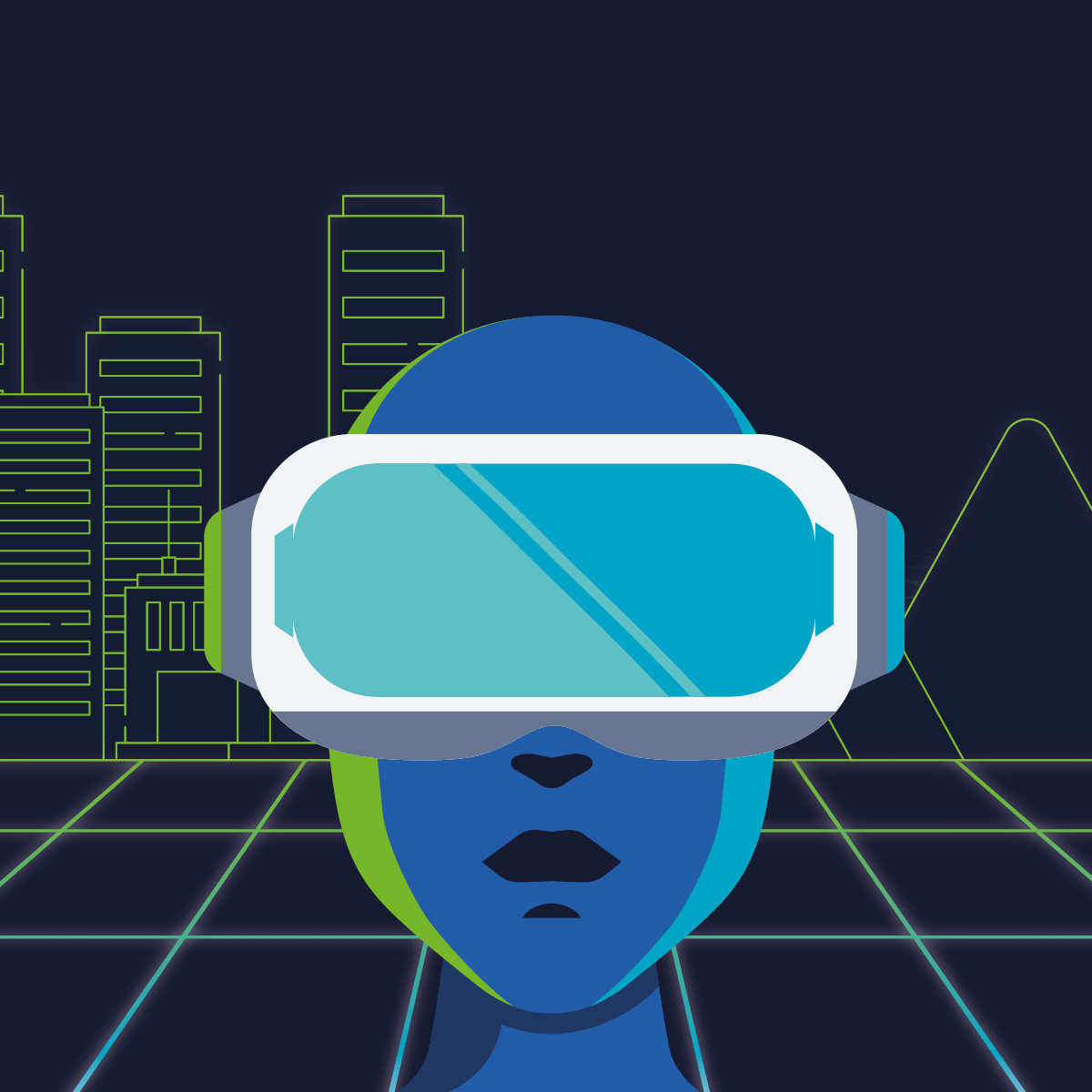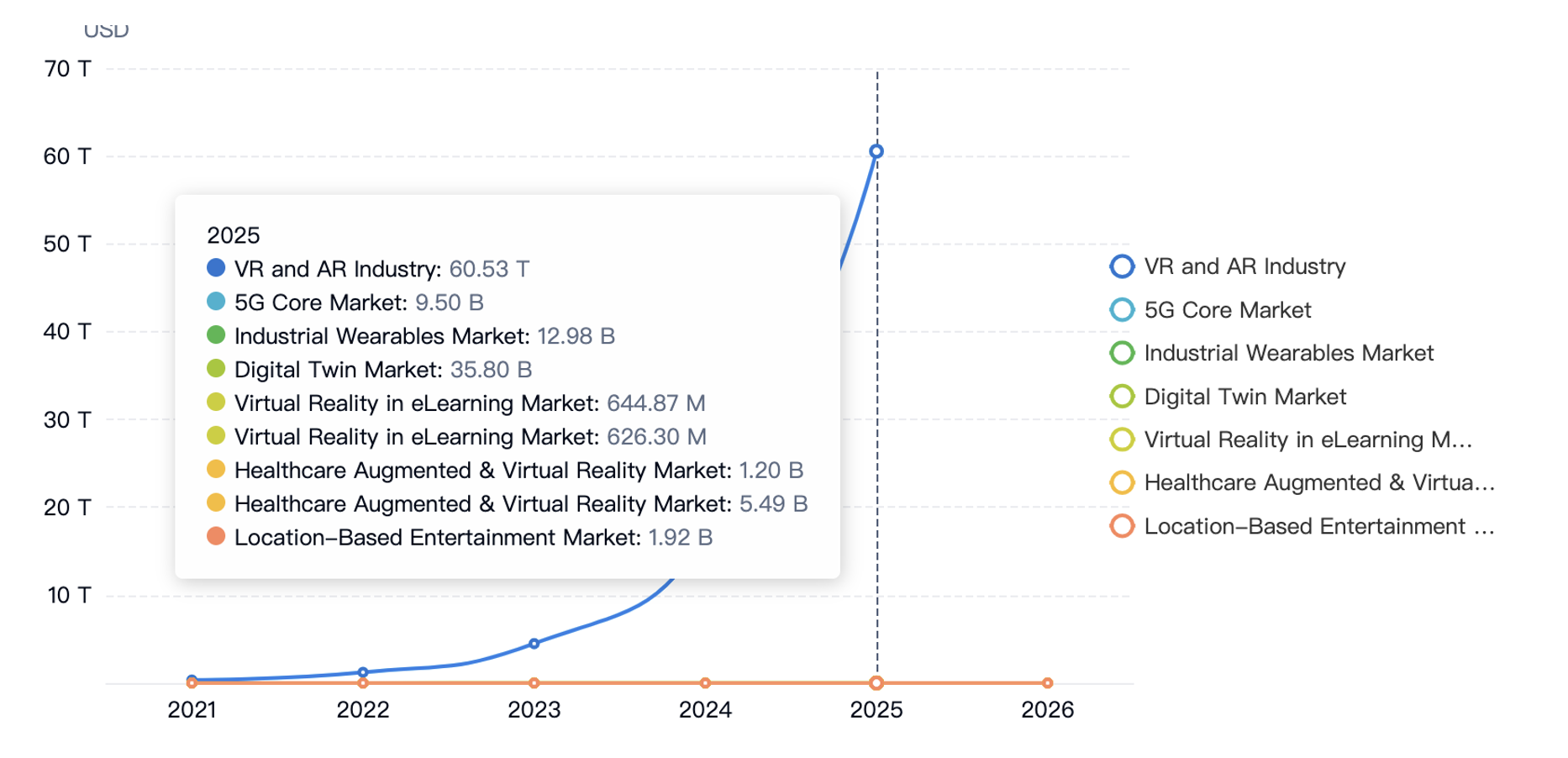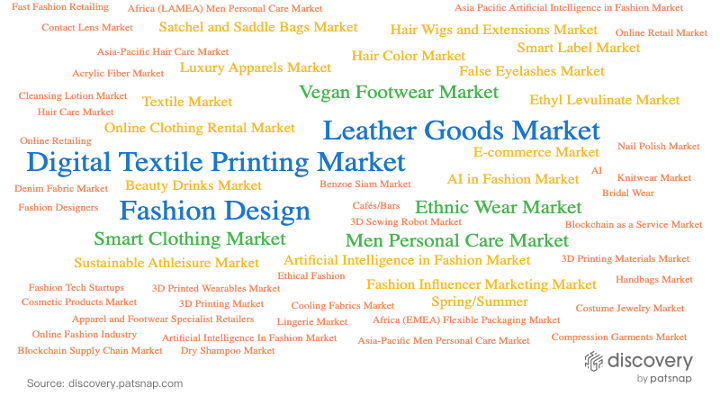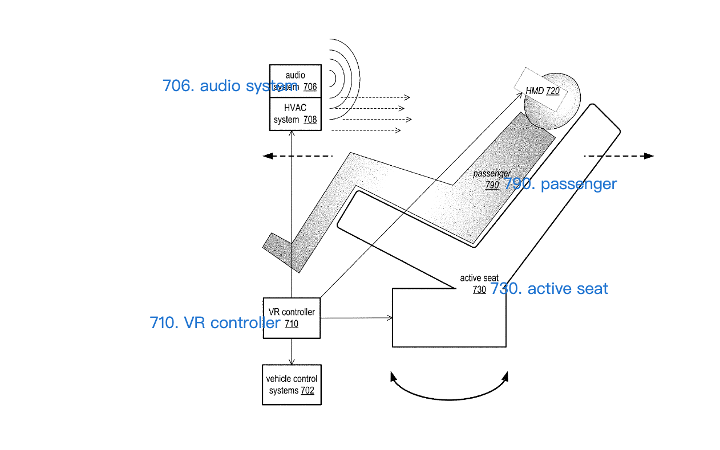
Virtual reality or VR for short, is a life-like, computer-generated simulation of a three-dimensional environment. Participants can interact with these environments using specialized electronic equipment such as headgear or glasses.
Virtual reality affects nearly every field — from education to medicine, fashion, transportation, and even defense. Interest in this sector is booming. Currently worth $1.22 trillion, by 2025 the market is expected to be worth more than $60 trillion.

Source: PatSnap Discovery
In this article, we explore 5 VR innovation trends augmenting the future and the impact of each. Let’s get started!
Trend #1: Neurological Diagnostics and Treatment
According to the UN, one in six people worldwide suffers from neurological disorders such as Alzheimer’s, Parkinson’s, epilepsy, multiple sclerosis, and beyond. Although there is no cure for these diseases, diagnosis is necessary in order for treatment to begin.
VR-powered technology simulates real-world environments without the risk and enables doctors and researchers to study how patients respond in real-time. These responses may be indicative of certain conditions, and help doctors make a more accurate diagnosis early on. Additionally, simulated environments can help patients exercise their brains to slow disease progression and build stronger neurological connections.
Trend #2: Virtual Fashion
The fashion industry is an economic powerhouse, worth a whopping $1.55 trillion as of 2021. But is its future virtual?
Yes. At least in part.
With the rise of Web3 and the metaverse, major fashion houses like Gucci, Prada, and Dolce and Gabbana (to name a few) are incorporating digital assets such as luxury NFTs and avatar wearables into their fashion portfolios.
Unlike physical clothing, virtual fashion is not subject to the laws of the universe. Therefore, designers have more creative freedom to make their pieces come to life — from transforming colors to winged jackets capable of flight — the possibilities of digital fashion are limitless. And it’s likely that these forward-thinking designers will make their entire income from metaverse fashion — complete with simulated runways and pieces that define nature.

Snapshot of the top market sectors in fashion. The most mentioned markets include digital textile printing, leather goods, fashion design, and smart clothing. Emerging markets include 3D sewing robots and 3D printed wearables.
Trend #3: Virtual Transportation
Imagine traveling from point A to B in an autonomous vehicle equipped with a VR headset. Rather than paying attention to the road, you could slip into an augmented reality and play games, socialize with friends, read, or visit the virtual location of your choice.
This reality may be closer than you think. Apple was recently granted a patent (#US11321923B2) for an autonomous vehicle that includes this VR-powered technology. If Apple commercializes this patent, it will provide users with “… immersive VR experiences by replacing the view of the real world with virtual environments.”

A snapshot of Apple’s VR patent US11321923B2. This image showcases a passenger wearing a VR headset in an augmented reality while in the vehicle.
Trend #4: Simulated Military and Defense Training
It’s no secret that experience is the best teacher — especially when it comes to high-stress situations.
With VR technology, military and defense professionals can access simulated, life-like environments to learn how to handle themselves in combat or in other hostile environments. Plus, they can learn how to work with specialized equipment and weapons without the risk of learning in real life. VR training enhances skills, reduces cost, and may improve how soldiers and police officers handle dangerous situations.
Trend #5: Next Generation Education
COVID-19 disrupted education for students, teachers, and parents alike. Overnight, instruction shifted from in-person to remote, creating obstacles for all involved. And while the Zoom environment wasn’t ideal for many, the future of education may be VR-based.
For example, instead of reading a dry history book, students may put on headgear and find themselves walking through ancient Mesopotamia — taking note of the climate, style, language, and culture. This immersive learning experience enables them to see, touch, and “interact” with the subject at hand, thereby increasing understanding and retention.

The value of the Global Virtual Reality in eLearning Market was estimated to be $103.49 million in 2020. By 2026, it’s expected to reach a valuation of $929.71 million, representing a CAGR of 44.17%.
What do you think — is simulated reality our inevitable future? Let us know in the comments below.
Hot Topics on Discovery
Self driving Machine learning Edge computing Electric vehicle Blockchain Biofuel Image sensor Nanotechnology Robotics Raw material Metal Electrode Voltage Semiconductor Polymer Electricity Coating Fiber Display device Raw material Electric motor Ultimate tensile strength Nozzle Carbon Building construction Alkyl Service life Electron Oxide Oxygen Solvent Control unit Flange Control system Drug Light source Piston Disease Electric power High pressure
